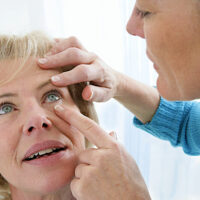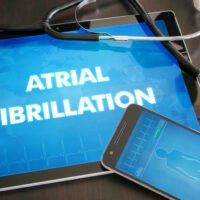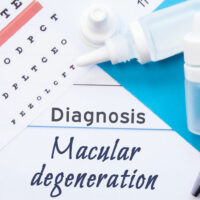Note these warning signs of a seizure

Seizures occur when there is a malfunction in the communication process between the nerve cells in the brain. This interruption can have effects like loss of consciousness or impaired movements of the muscles in the body. While there are different types of seizures, if one has frequent episodes without any known cause, it is diagnosed as epilepsy. One can learn to recognize certain warning signs of seizures to help manage the condition.
Stages of seizure
There are four different stages of seizure in epilepsy attacks, and understanding each stage will help in better management of the condition.
Prodrome stage
This is the stage which is a warning sign before the seizure occurs. These symptoms often go unnoticed because they are very mild and can be difficult to recognize if one is not paying attention. Some of the common symptoms of this stage include confusion, irritability, anxiety, a “funny feeling,” headache, difficulty staying focused, mood changes, difficulty sleeping, and even behavioral changes. These signs can present themselves days or even hours before the seizures are about to occur.
Aura
This is the next stage of the warning sign, which is considered to be the early part of the seizure. There are cases where the aura stage itself is a seizure of sorts; it is also called a simple focal or partial seizure.
When someone experiences simple focal seizures, this happens because the impairment is occurring in one part of the brain. When this malfunction spreads to other parts, it transforms into other types of seizures like generalized tonic-clonic seizures or GTC seizures. Most of the people who experience simple focal seizures do not lose consciousness. Here are some of the symptoms to observe:
Experiencing intense anxiety or fear
Feeling numb or tingly
Confusion
A feeling of deja vu
Experiencing hallucinations in the form of smells, sounds, and even visions
Feeling “butterflies” in the stomach and nausea
Twitching of the muscles or jerking movements on one side of the body
Change in blood pressure and heart rate
Loss of bladder or bowel control
There are some people who experience the symptoms of aura, and the condition subsides without leading to a prolonged or severe seizure. Some people skip the aura warning signs and have seizures with no warning signs, so it is always best to be prepared.
Middle (Ictal) phase
The prodrome and aura were the two phases of warning signs of a seizure. After the aura stage, or from the first warning sign of the seizure till the end of the seizure, is the ictal phase. Here’s what to expect from this stage of the condition:
Body convulsions
Memory lapse
Difficulty in hearing
Loss of awareness or consciousness
Loss of muscle control
Twitching
Racing heart
Trouble breathing
Repeated movements like lip smacking or chewing
Odd smells, sounds, and tastes
Feeling confused
Difficulty in speaking or ending up saying strange words
Tips to stay safe
Once one recognizes the warning signs of a seizure, it is important to stay safe. Here are some safety tips to follow:
If anyone is cooking near an open flame, immediately stop and move away to a safer area.
Anyone who is driving should stop immediately and ask someone to stay with them. They are advised to lie down or sit down.
Avoid climbing stairs or heights.
If there are children in the house, prepare them for the seizure and also be sure that there is someone in the house to care for them during the seizure.
Avoid swimming or any water activities that may lead to an accident.
If anyone experiences confusion during or after a seizure, they tend to wander off. One must ask someone to check up on them and also lock the doors of the home.
These may seem like small, everyday things, but they are extremely important in the management of seizures and in helping one recover in a safe manner without any mishaps or accidents. It is important to alert the children to prevent fear or any negative impact on their mental health.
The final stage
This is the stage after the seizure. It is when the individual is still recovering from the after-effects. There are some physical after-effects that gradually slow down and go away. Depending on the severity of the seizure and which part of the brain was affected, the seizure will pass accordingly. Some of the symptoms to look out for include:
Fear and anxiety
Loss of bladder control or bowel movement
Weakness in parts of the body
Extreme thirst
Experiencing sore muscles
Feeling confused
Exhaustion and feeling fatigued
Lack of consciousness
Feeling frustrated
Experiencing a headache
Feeling nauseated
There may be injuries to the head, cuts, or broken bones, depending on the extent of the seizure.
It is possible that some people may not even remember having a seizure after it passes. Some may remember only part of it, and some may remember the whole episode.
Management tips
One should also keep some safety measures in mind during a seizure, such as the tips given below:
Keep a diary with a record of when the seizure was experienced, how long it lasted, and also what the person doing when the seizure started.
Share this information on timing and warning signs with the doctor so they can advise on how to be careful the next time.
Follow the course of treatment as advised by the doctor.
When one has a seizure, the caregiver should make sure of these things:
Do not put anything in their mouth.
Check to see if the person is breathing properly and normally.
Stay with the person during the seizure.
Roll the person on their side to help any saliva or vomit drain from their
mouth during the seizure.
Record the start time of the seizure and also note its duration.
Always follow a safety protocol set by the doctor to help manage this condition and ask for help whenever needed.





